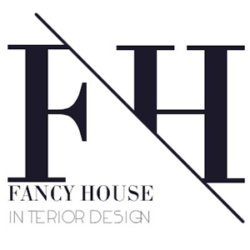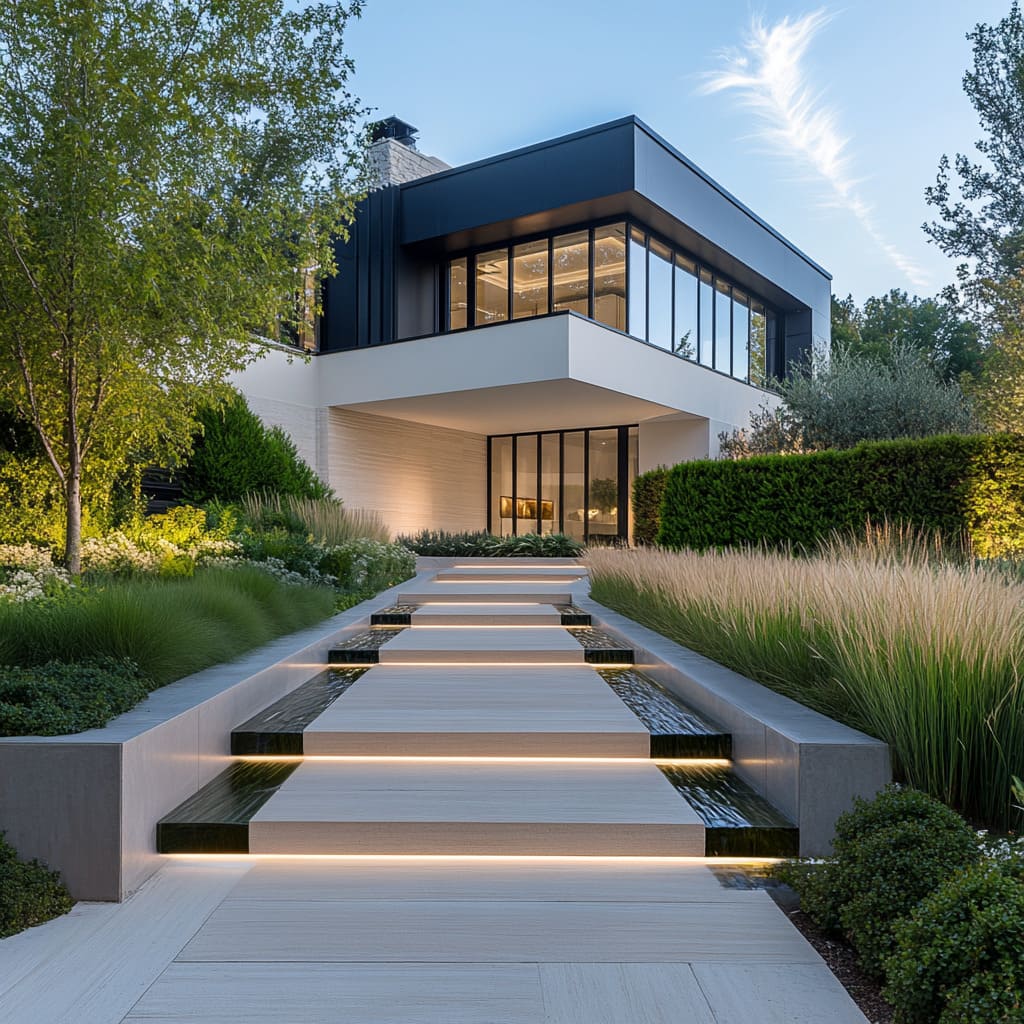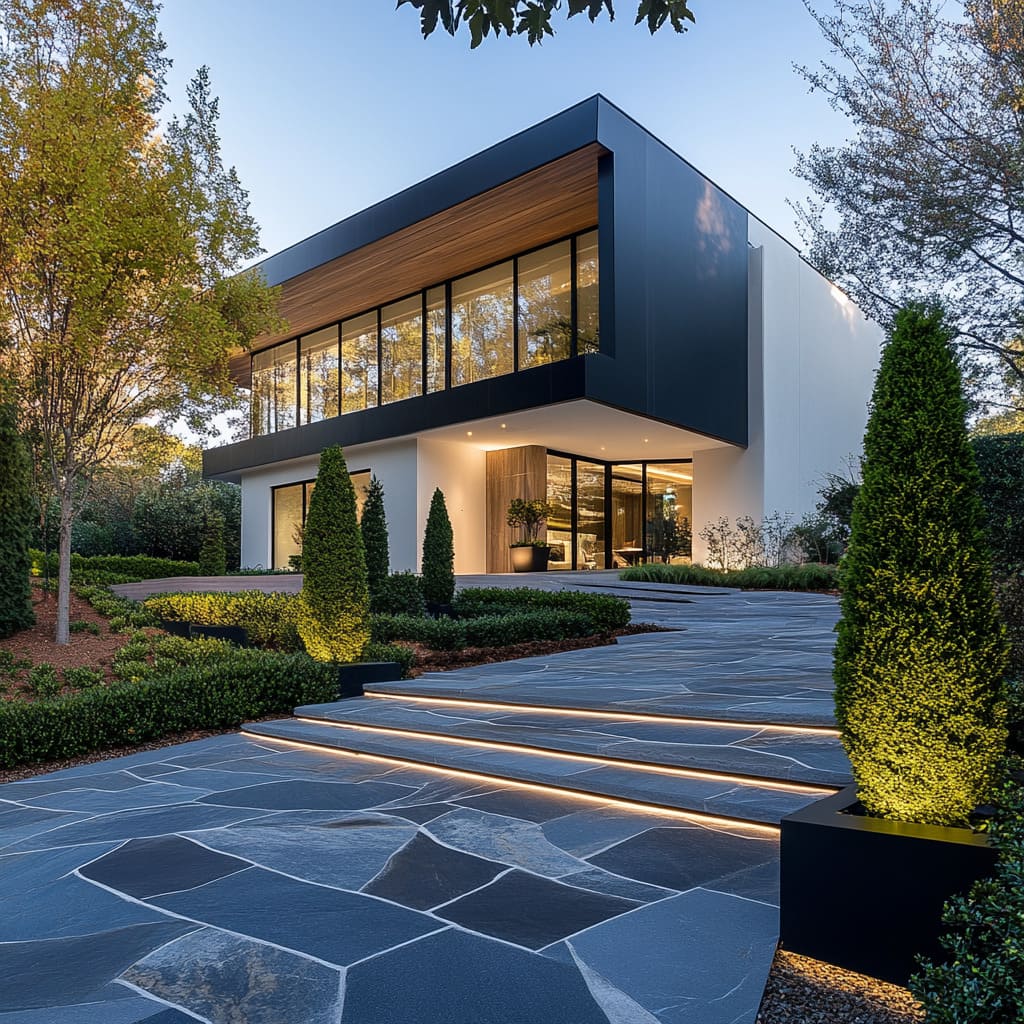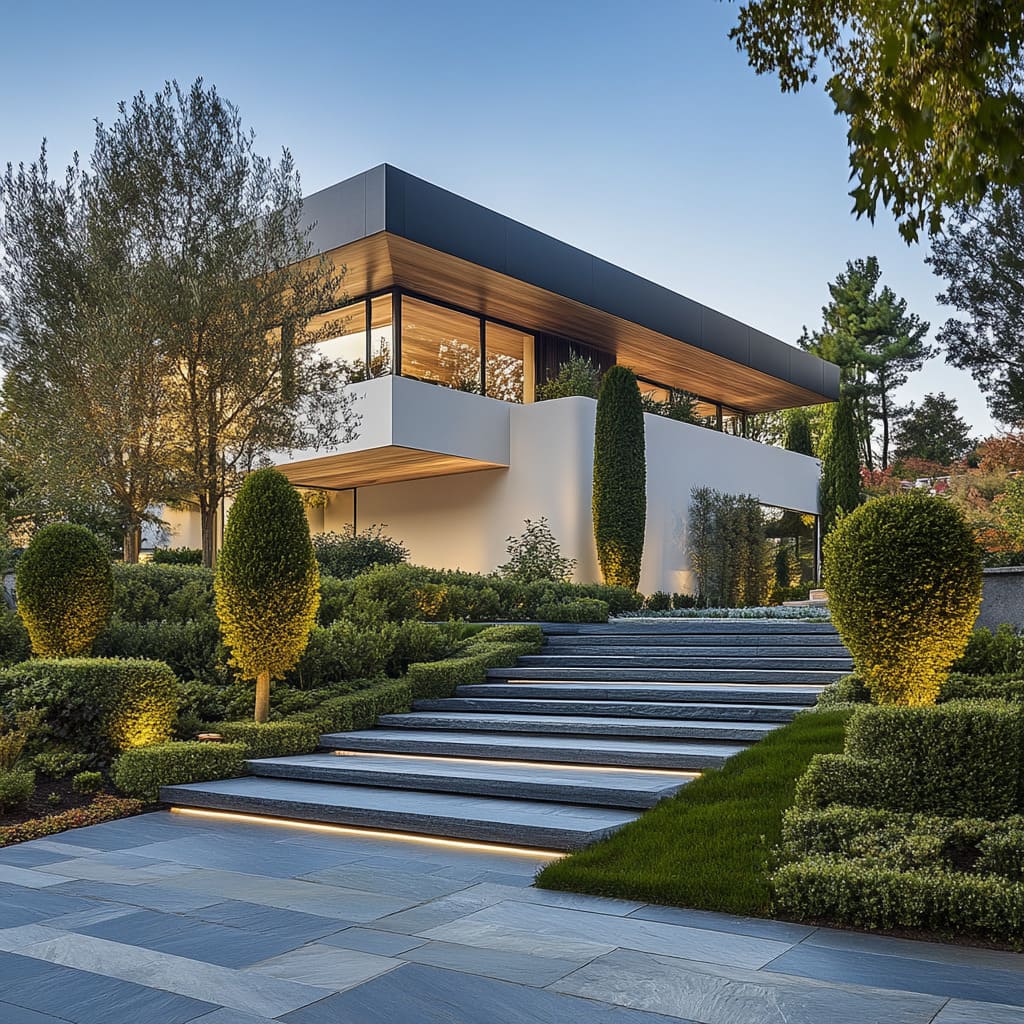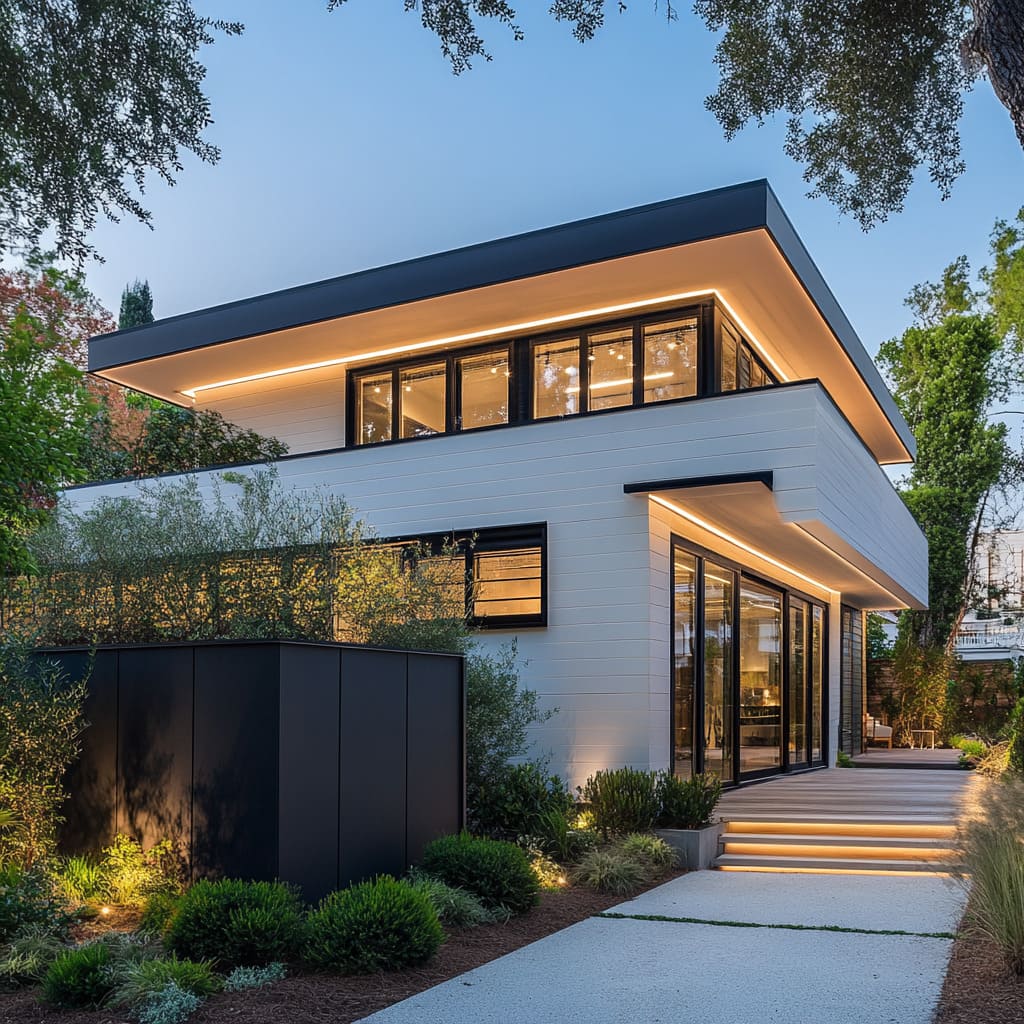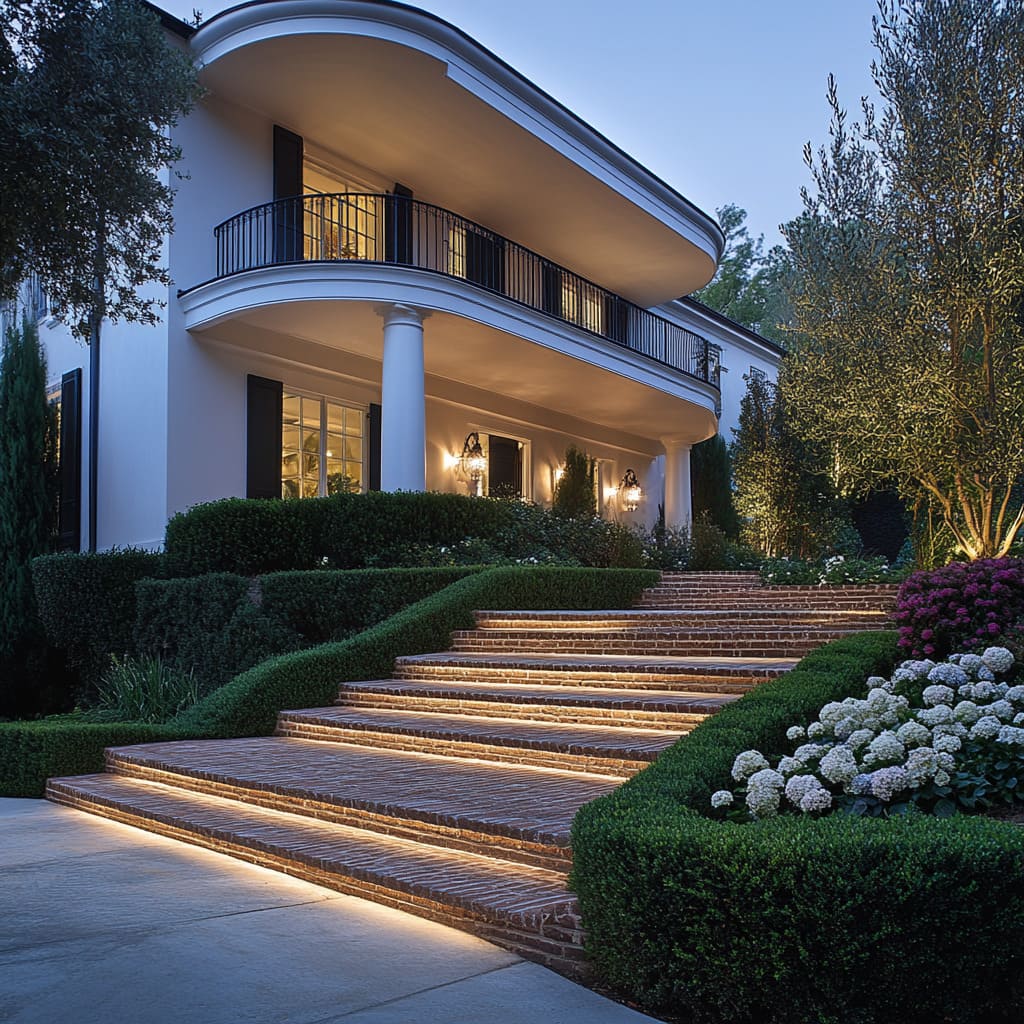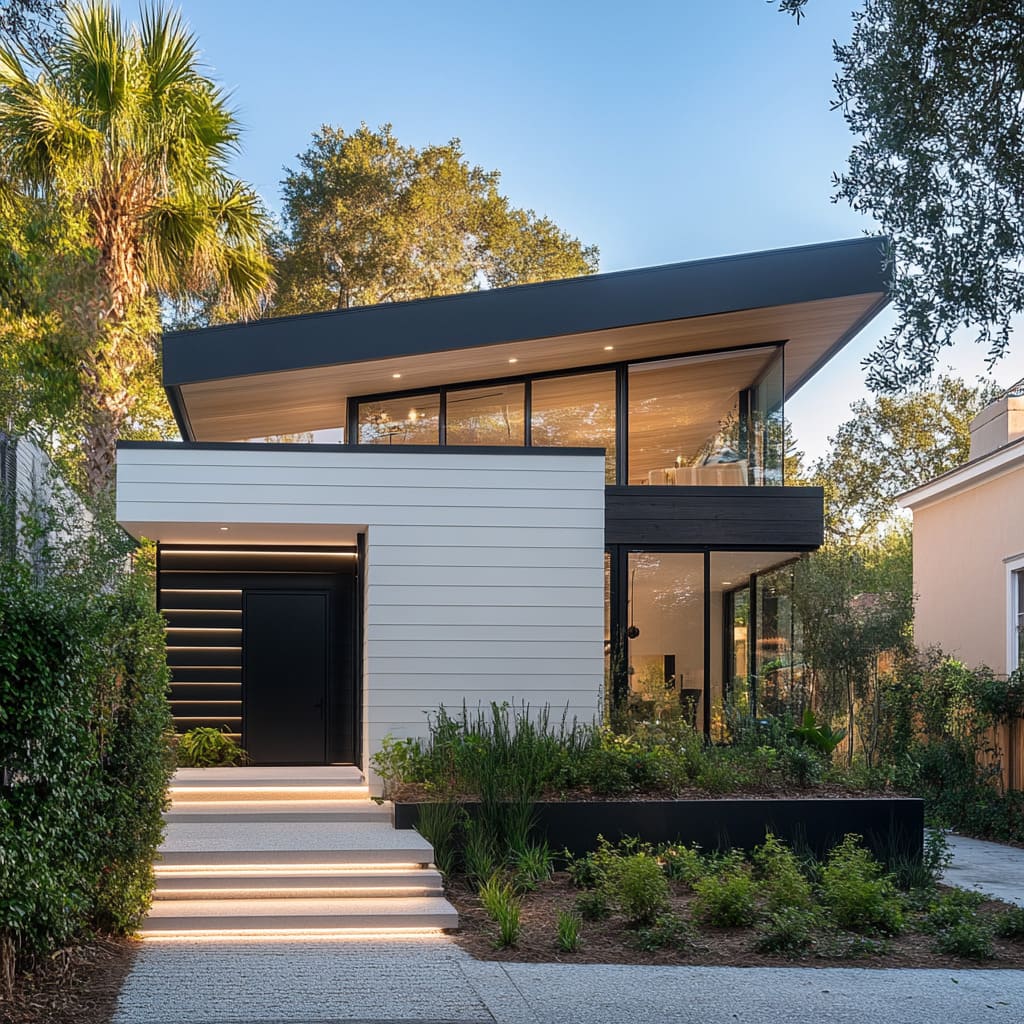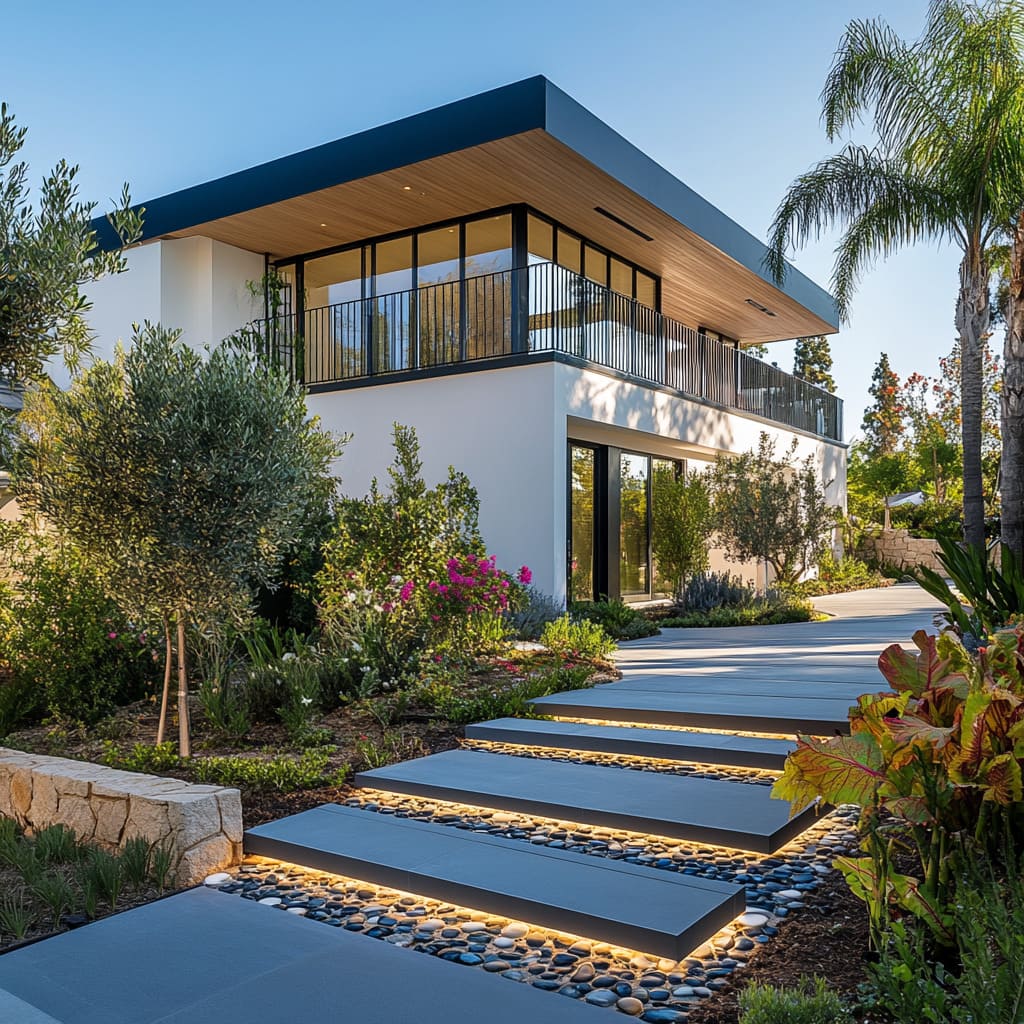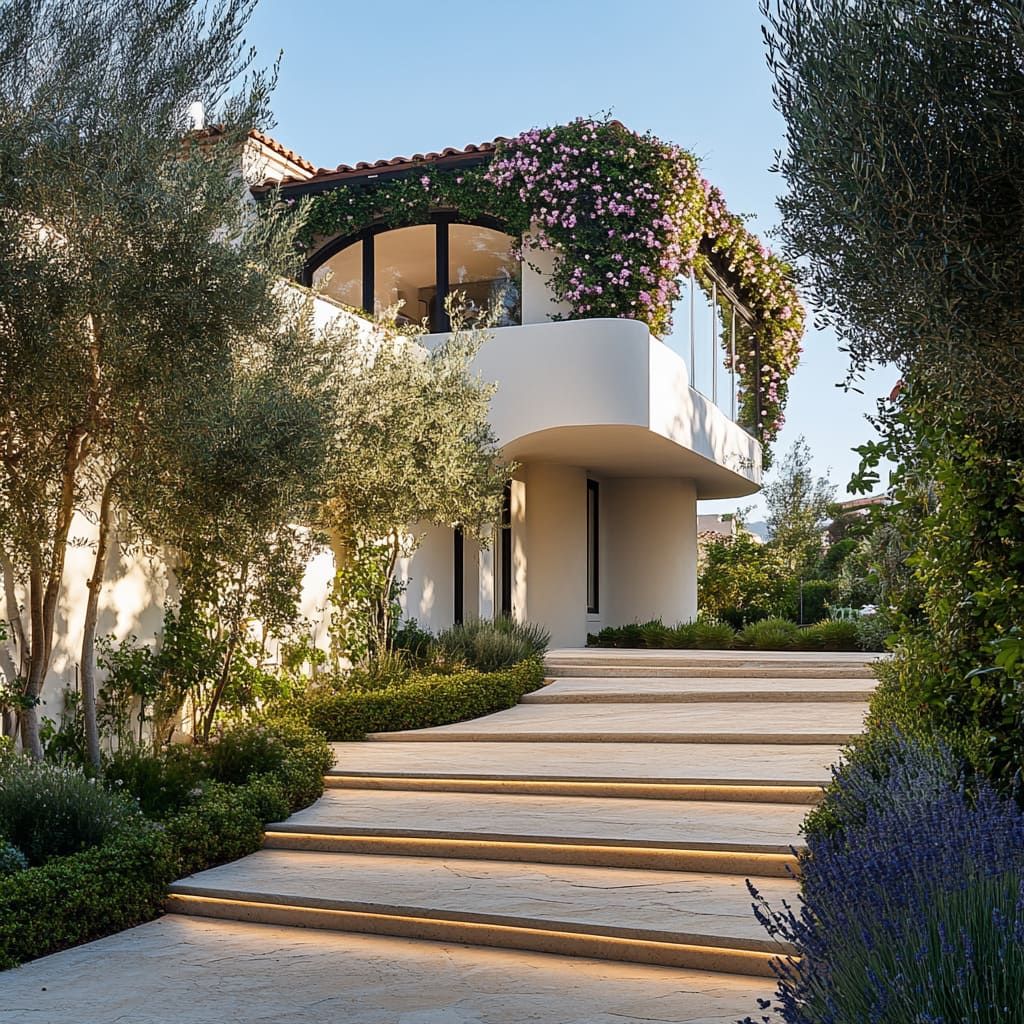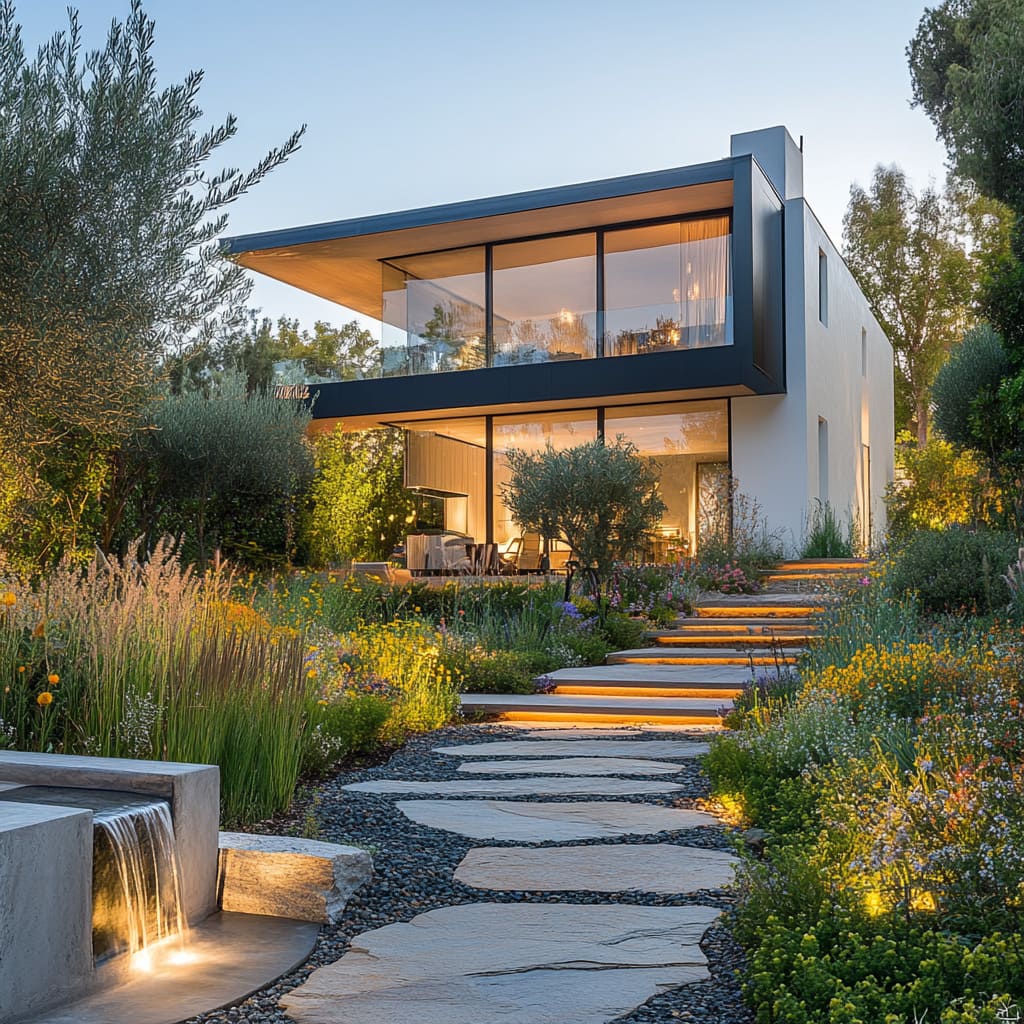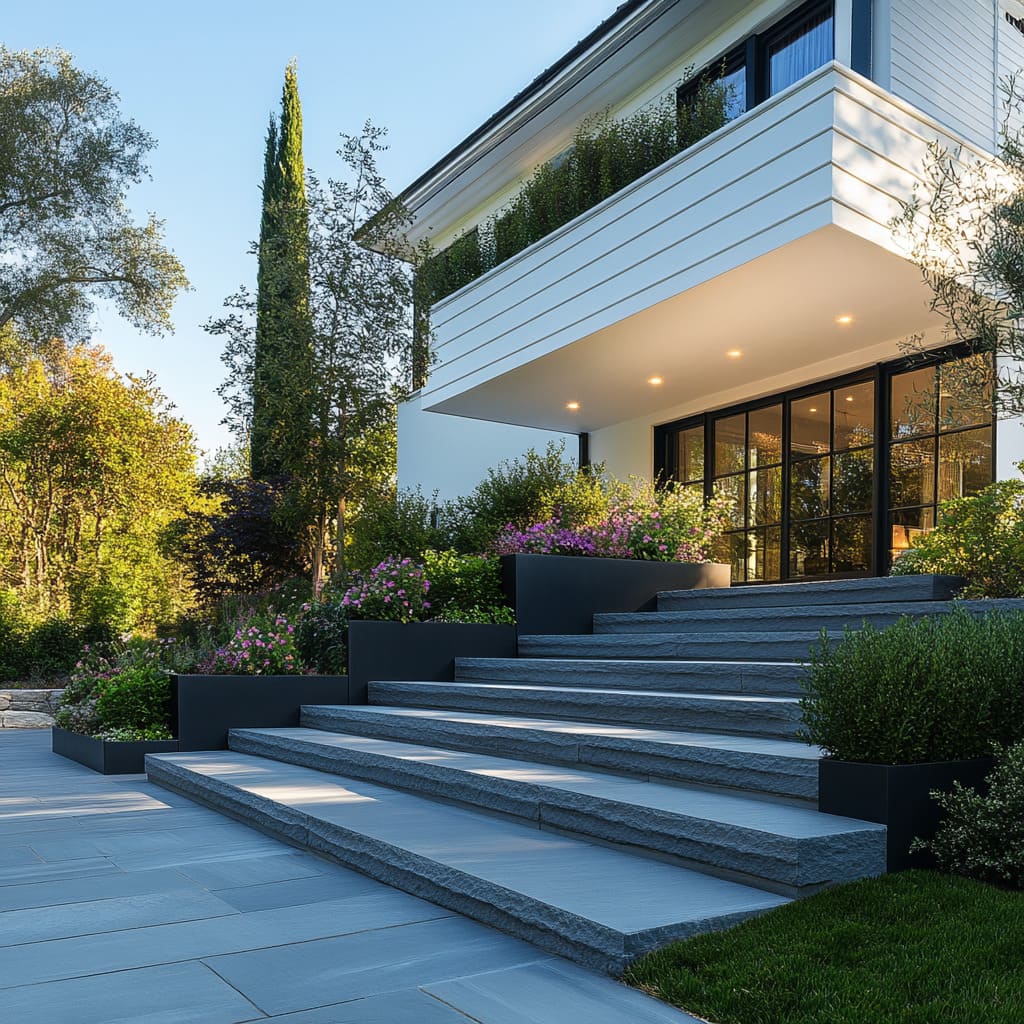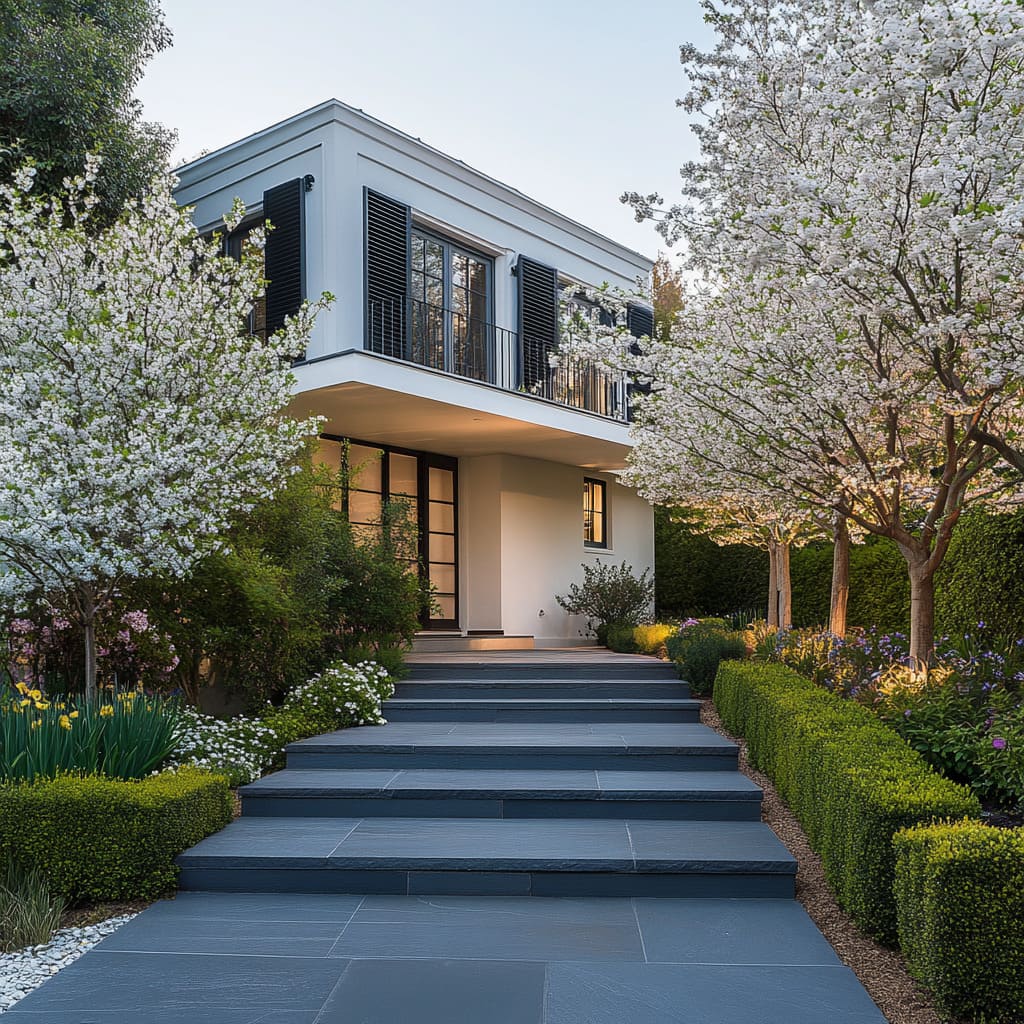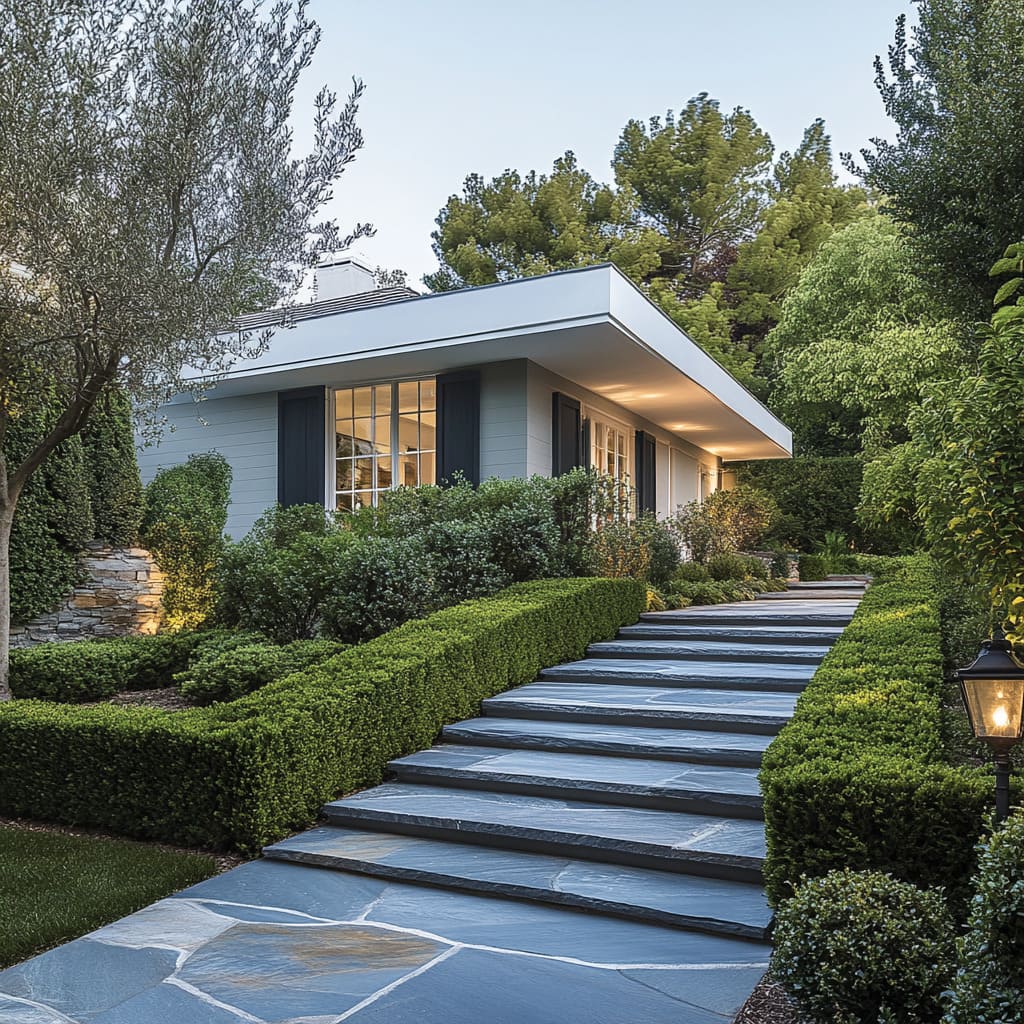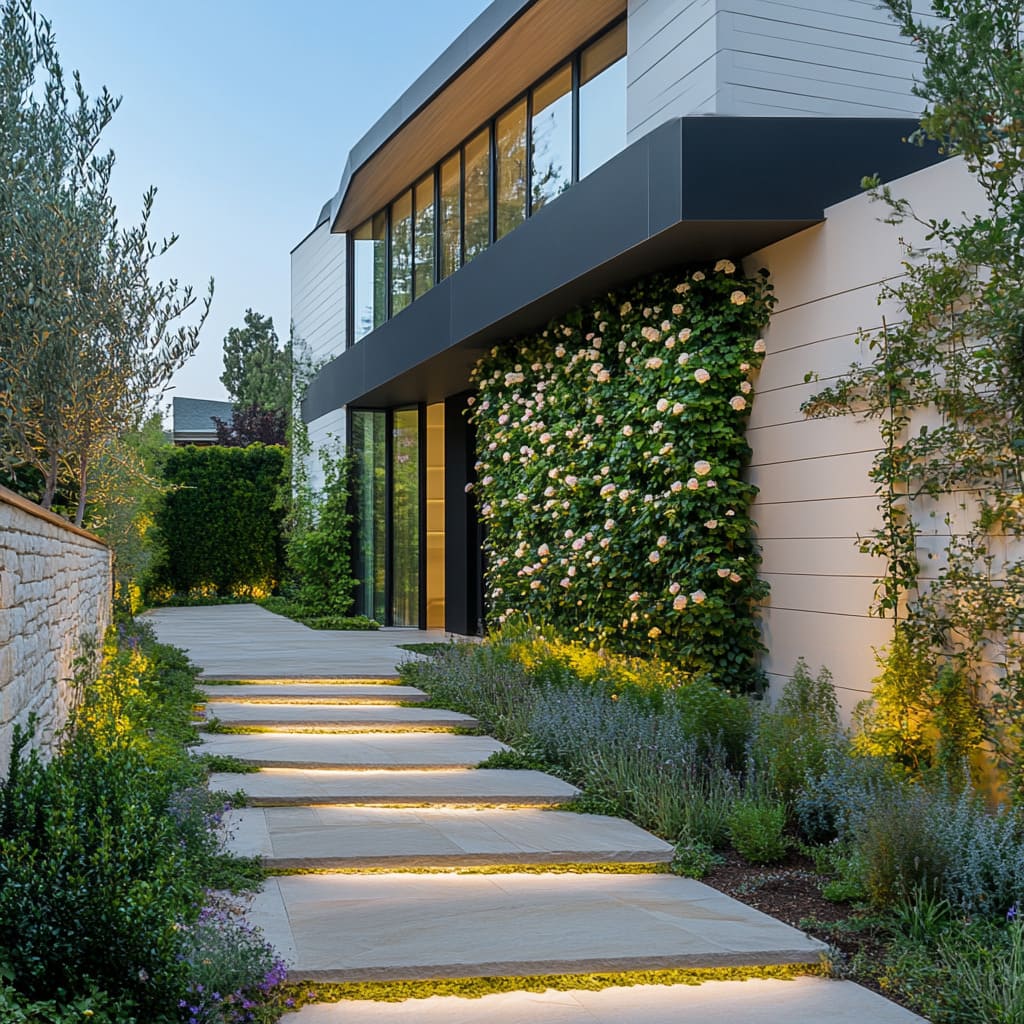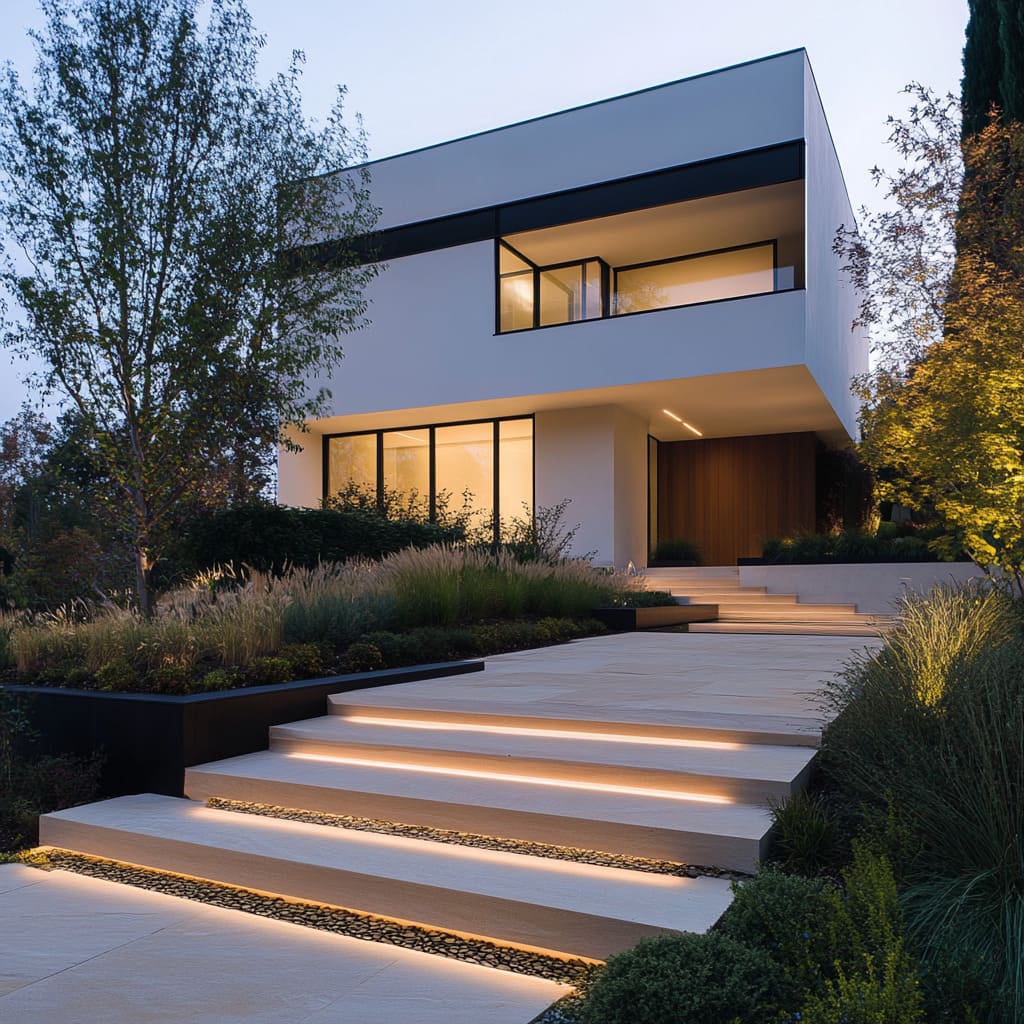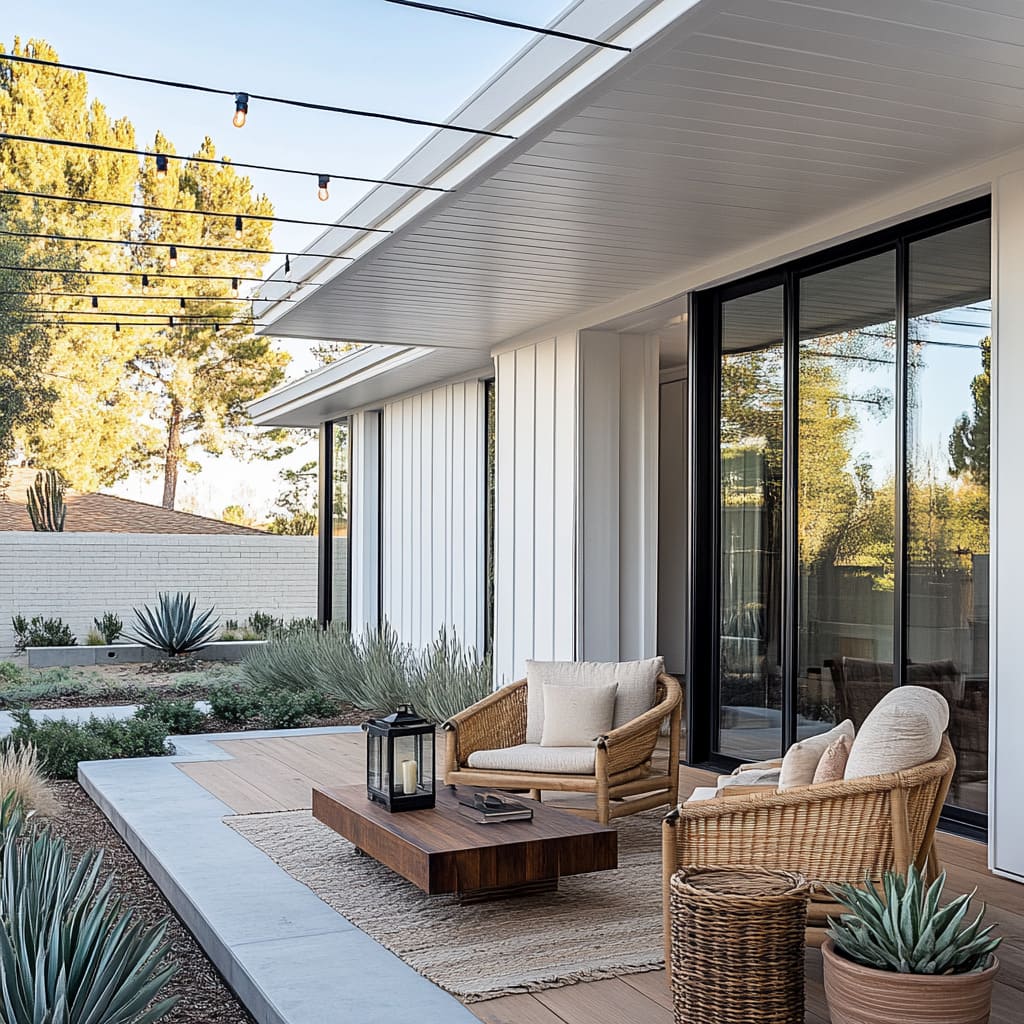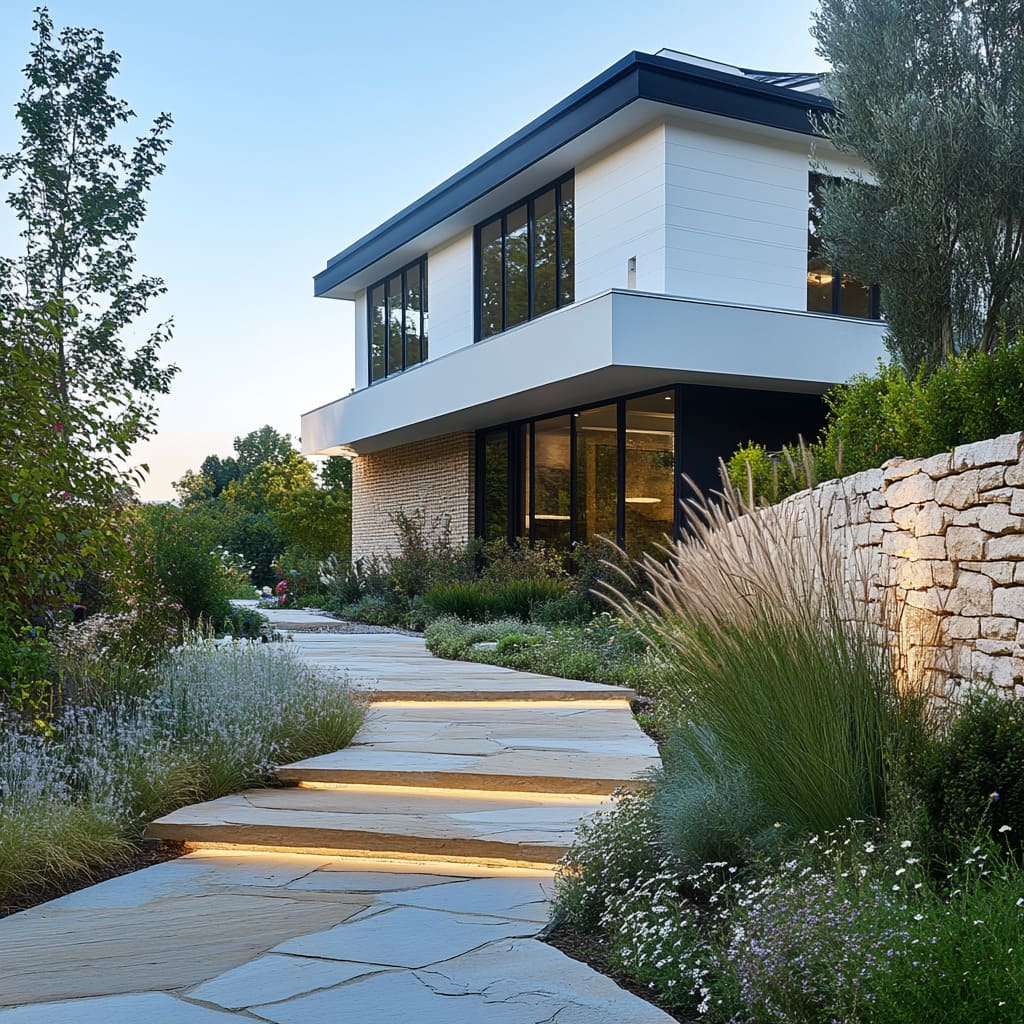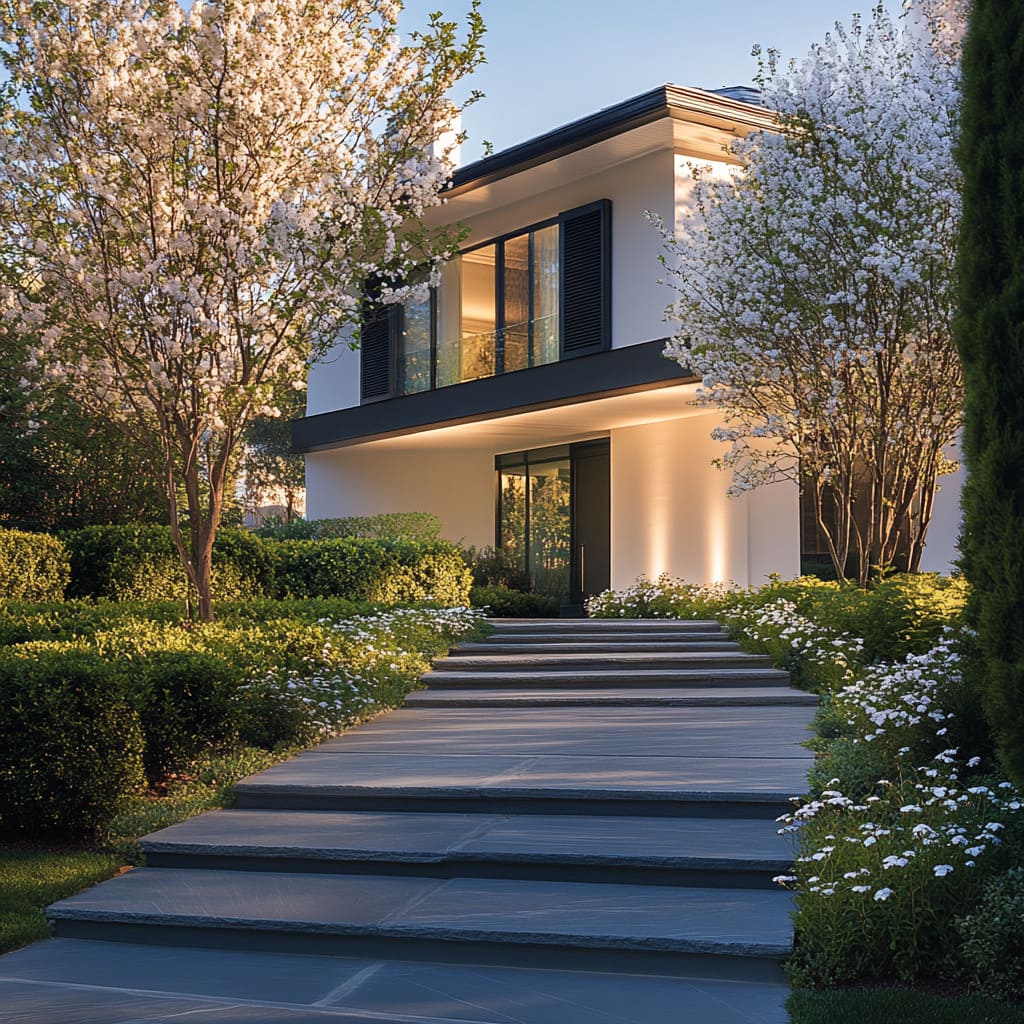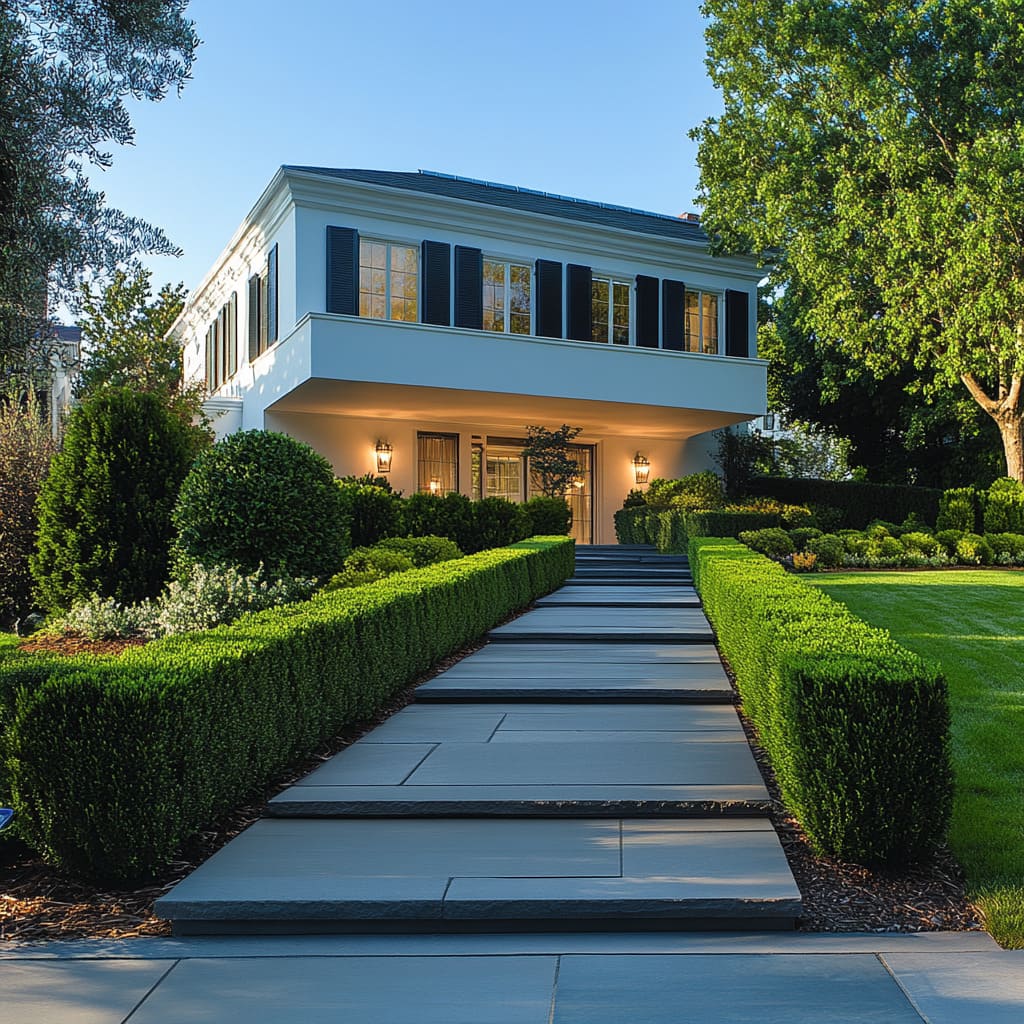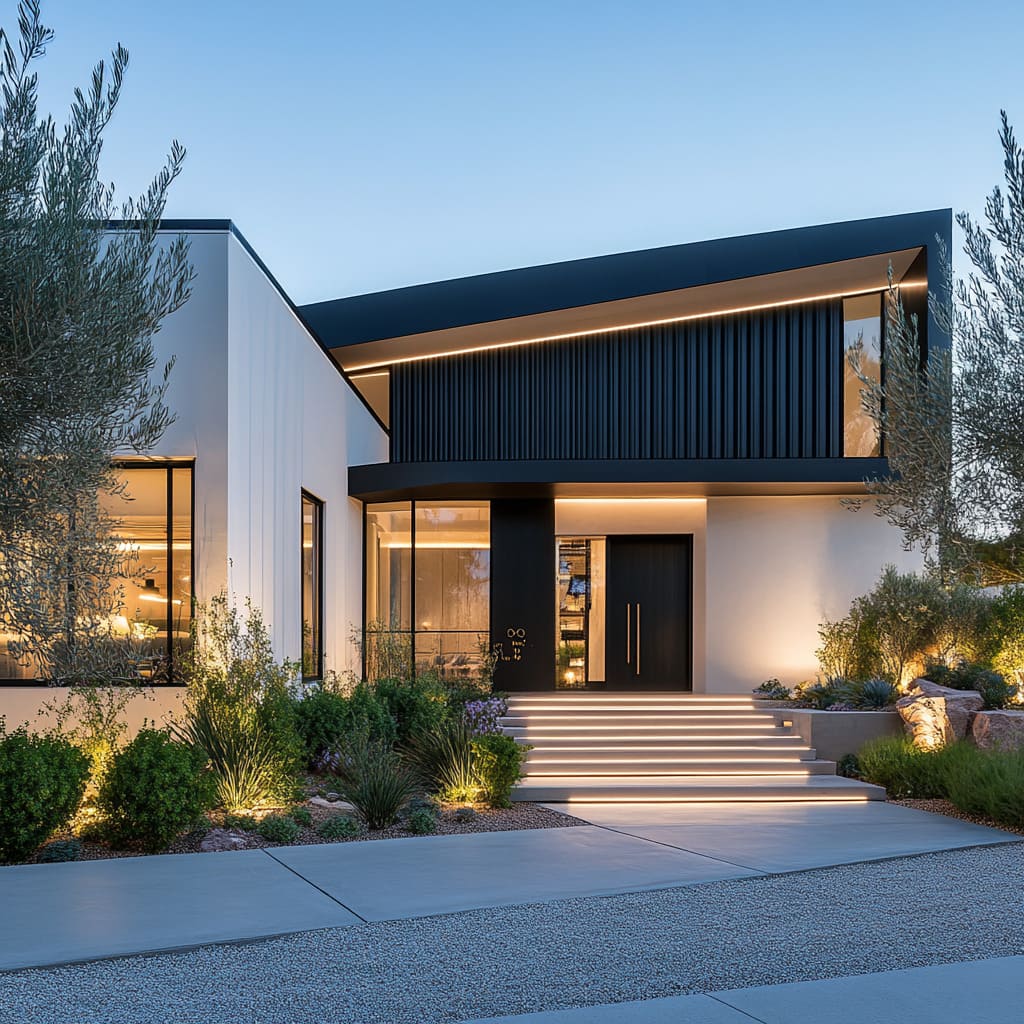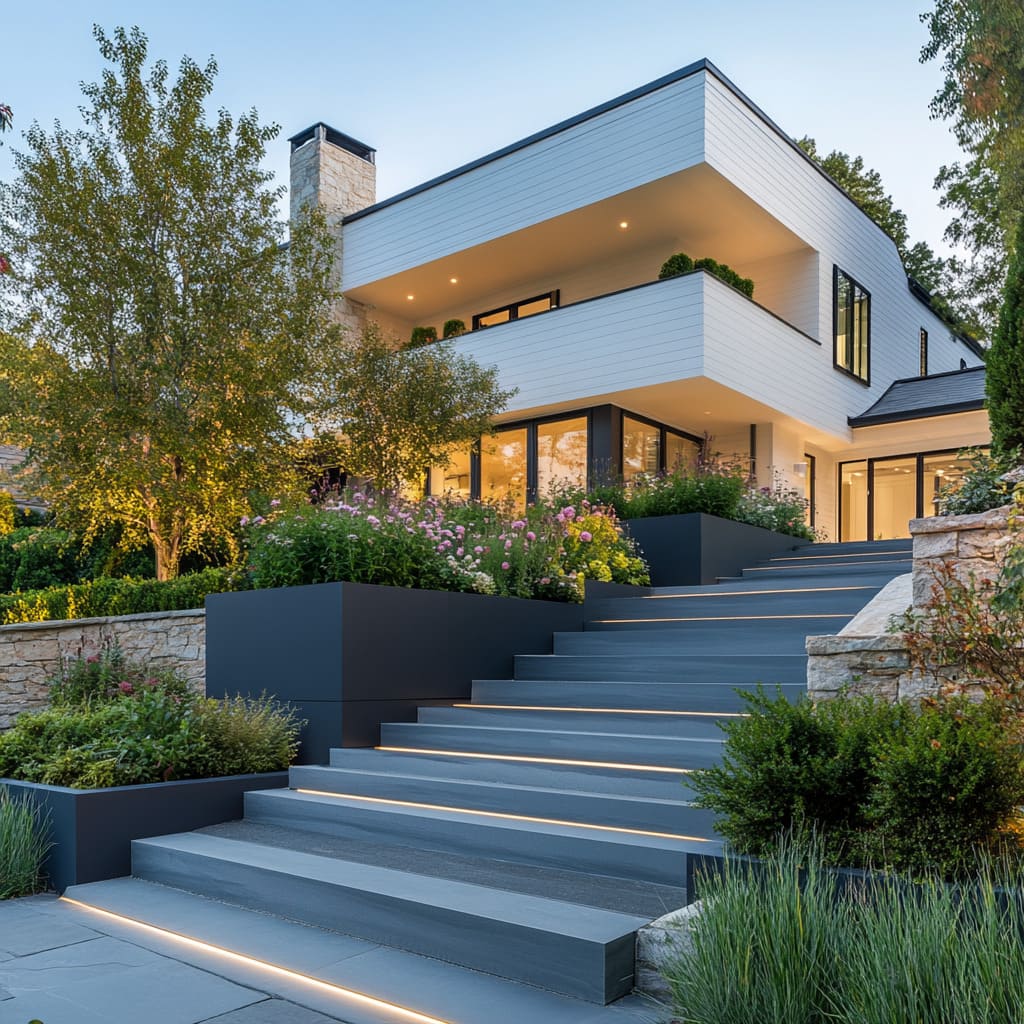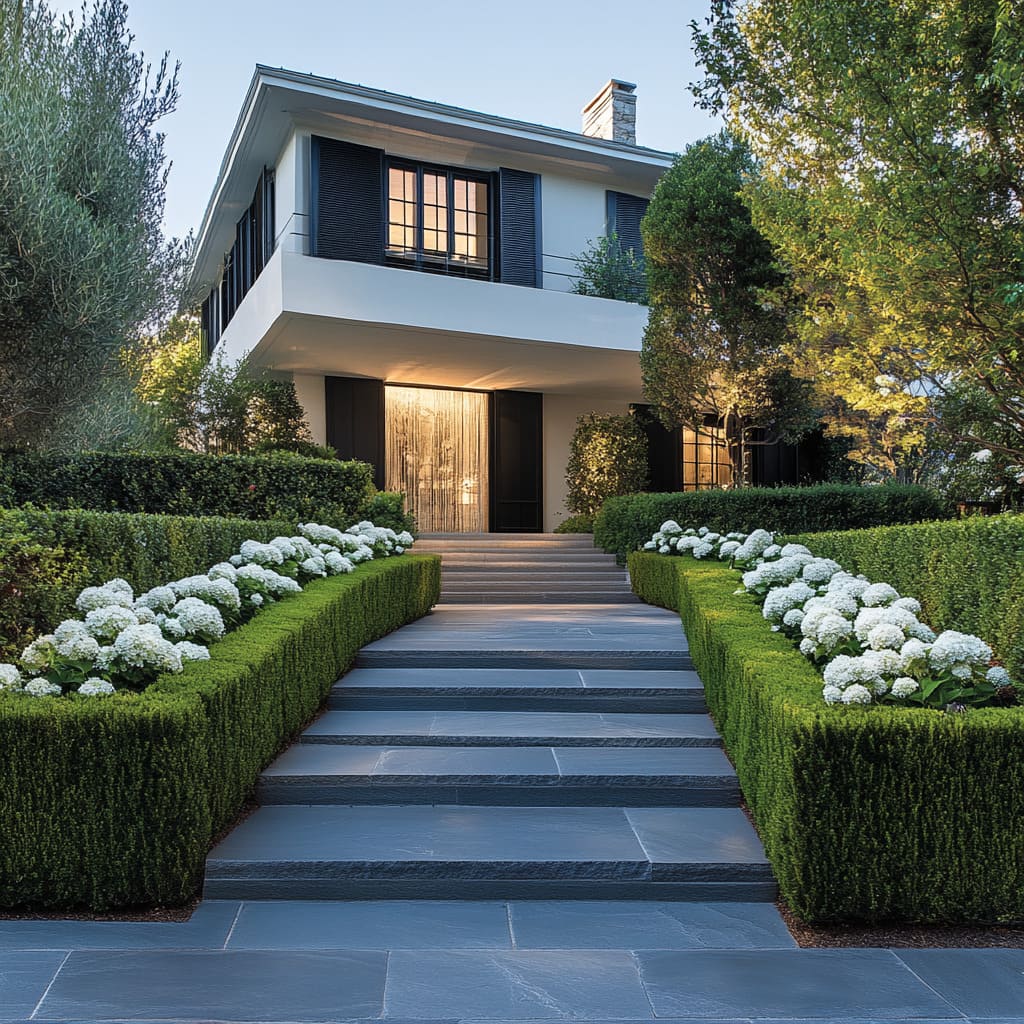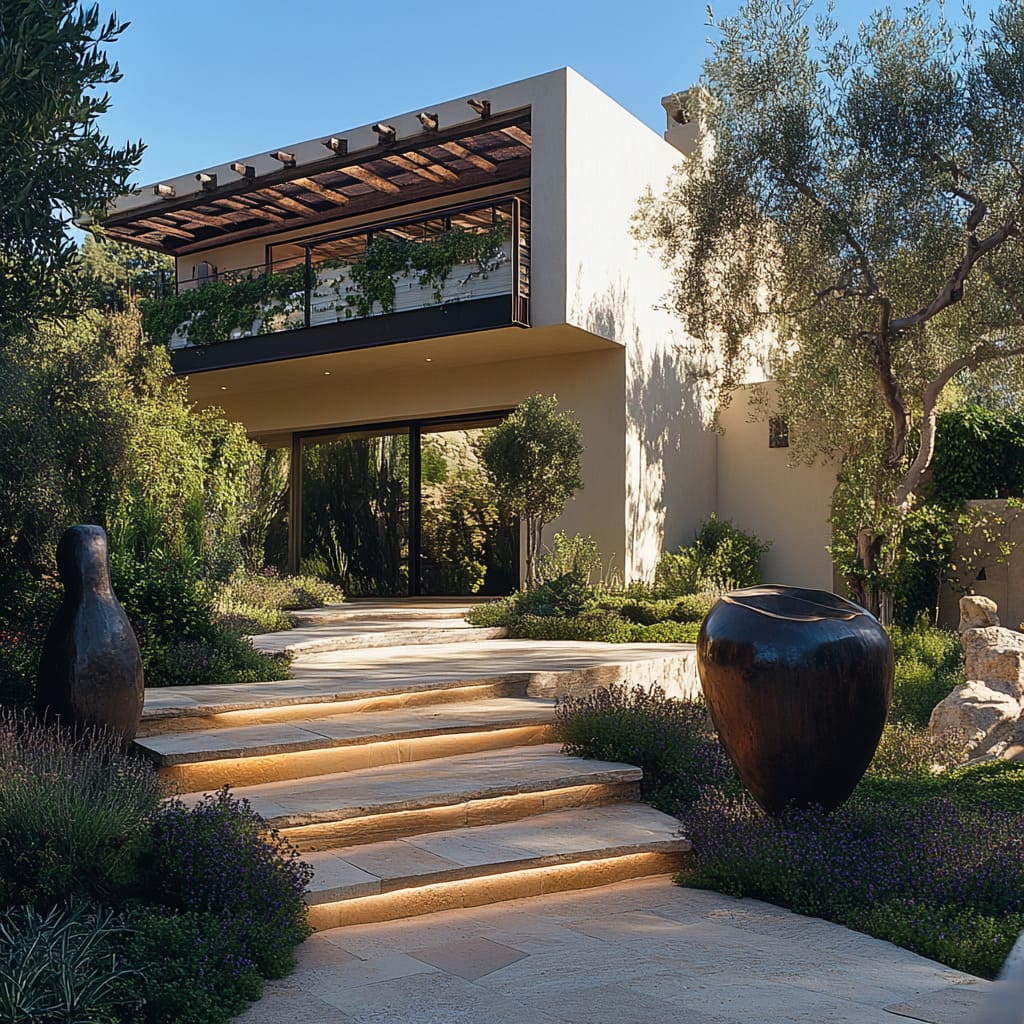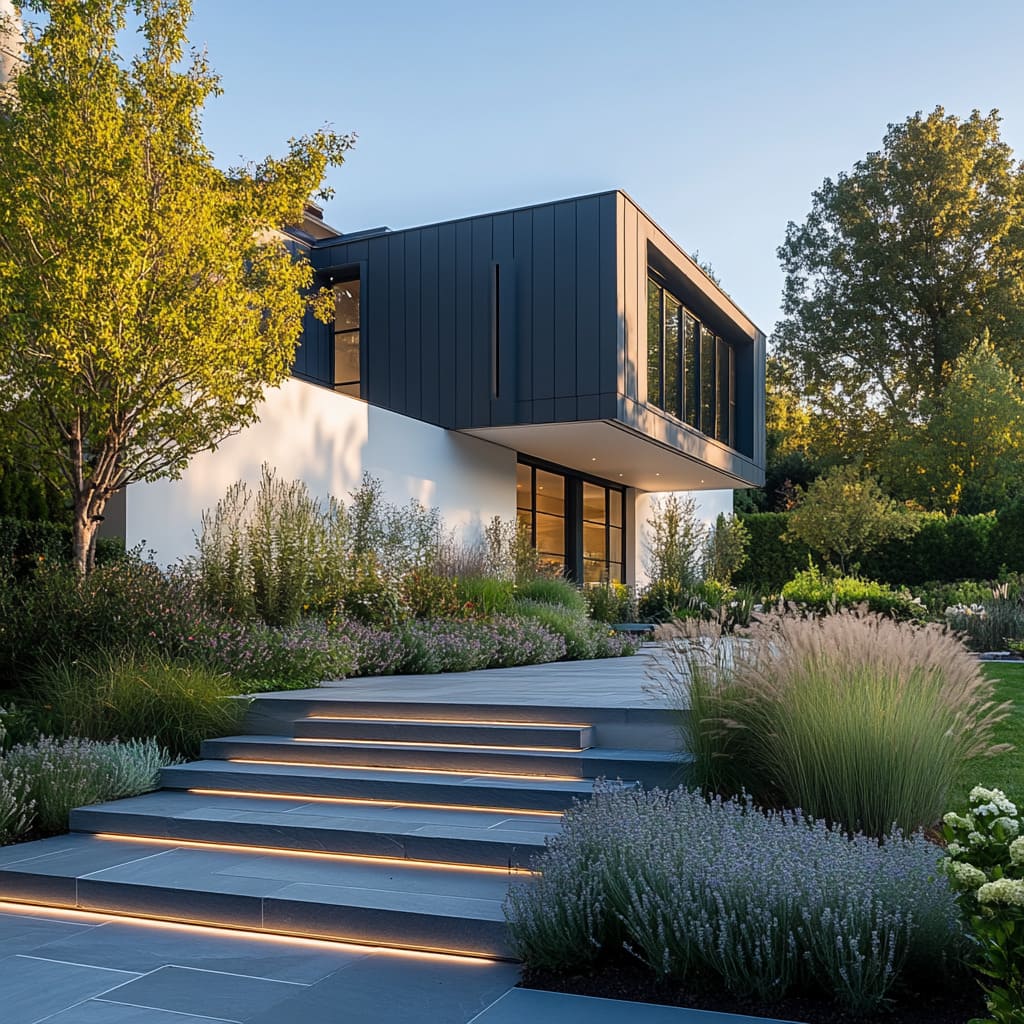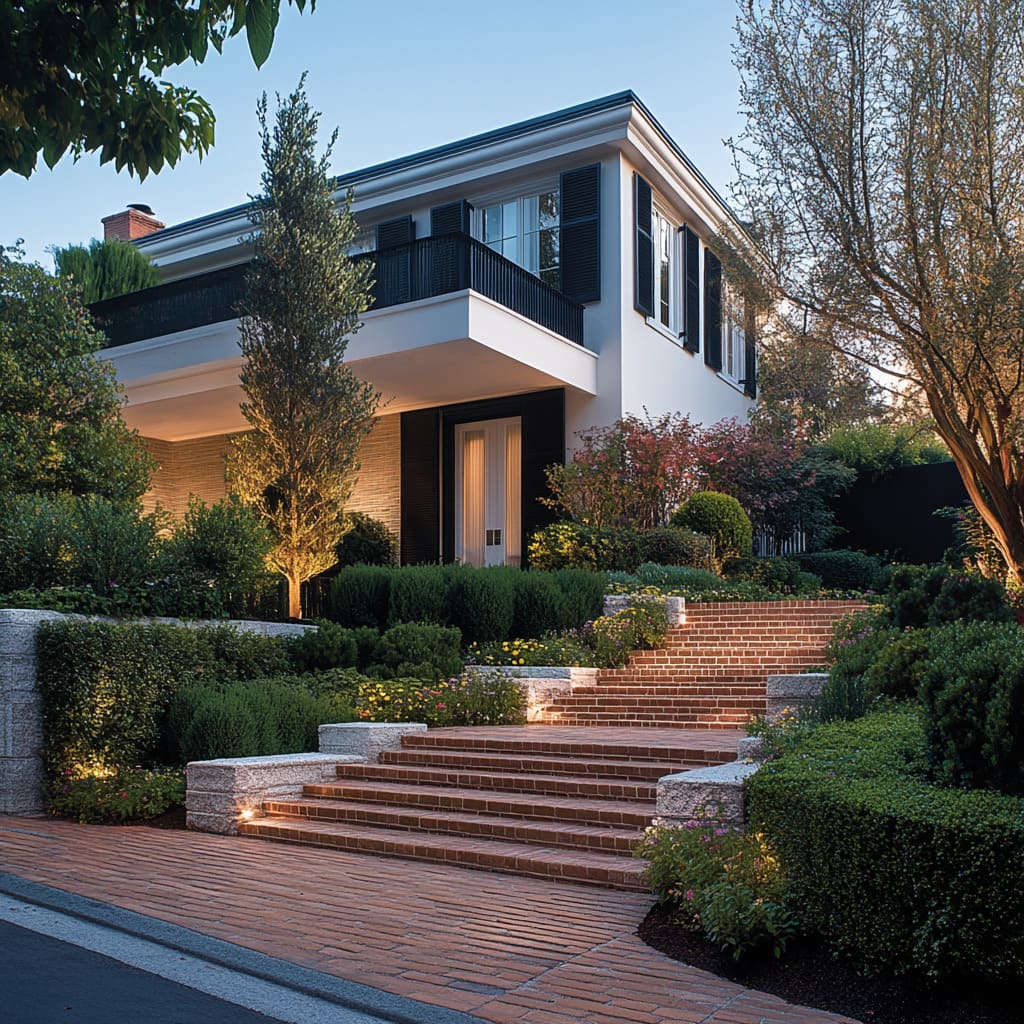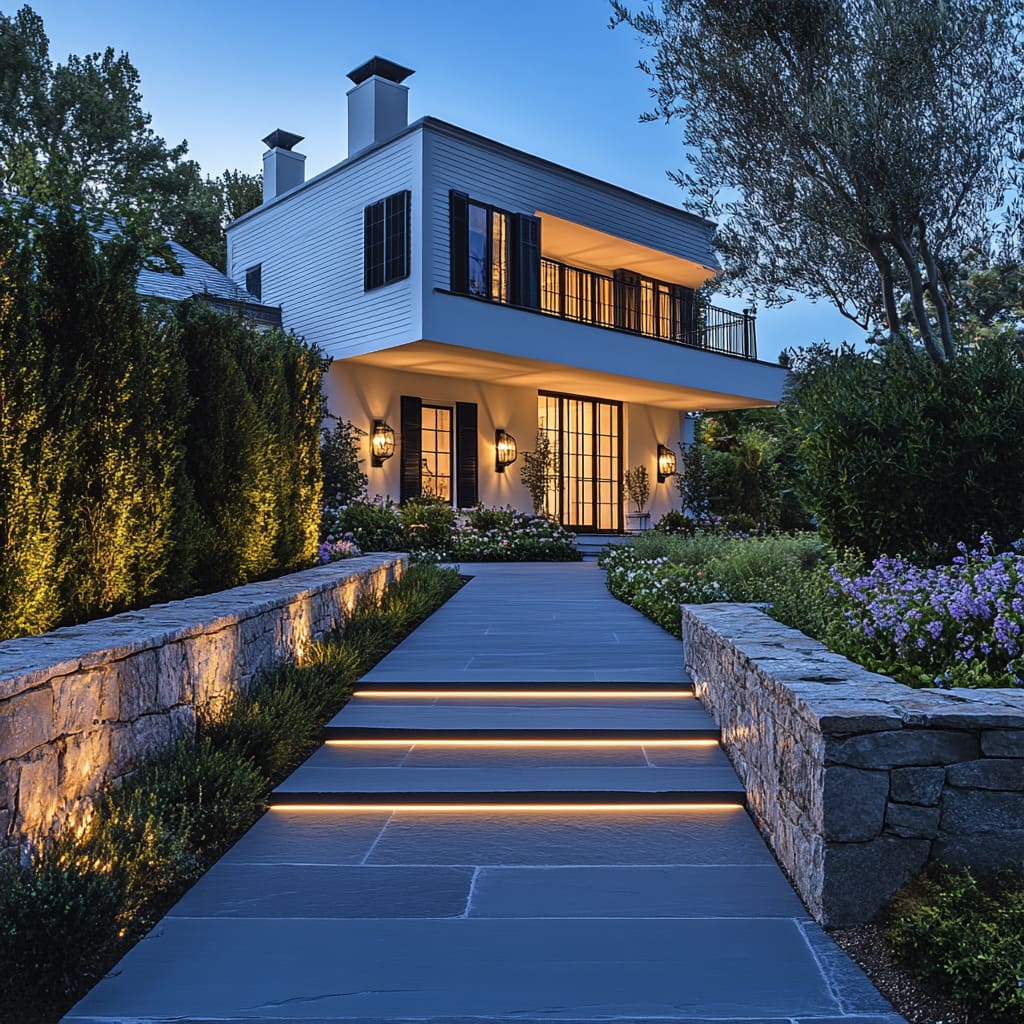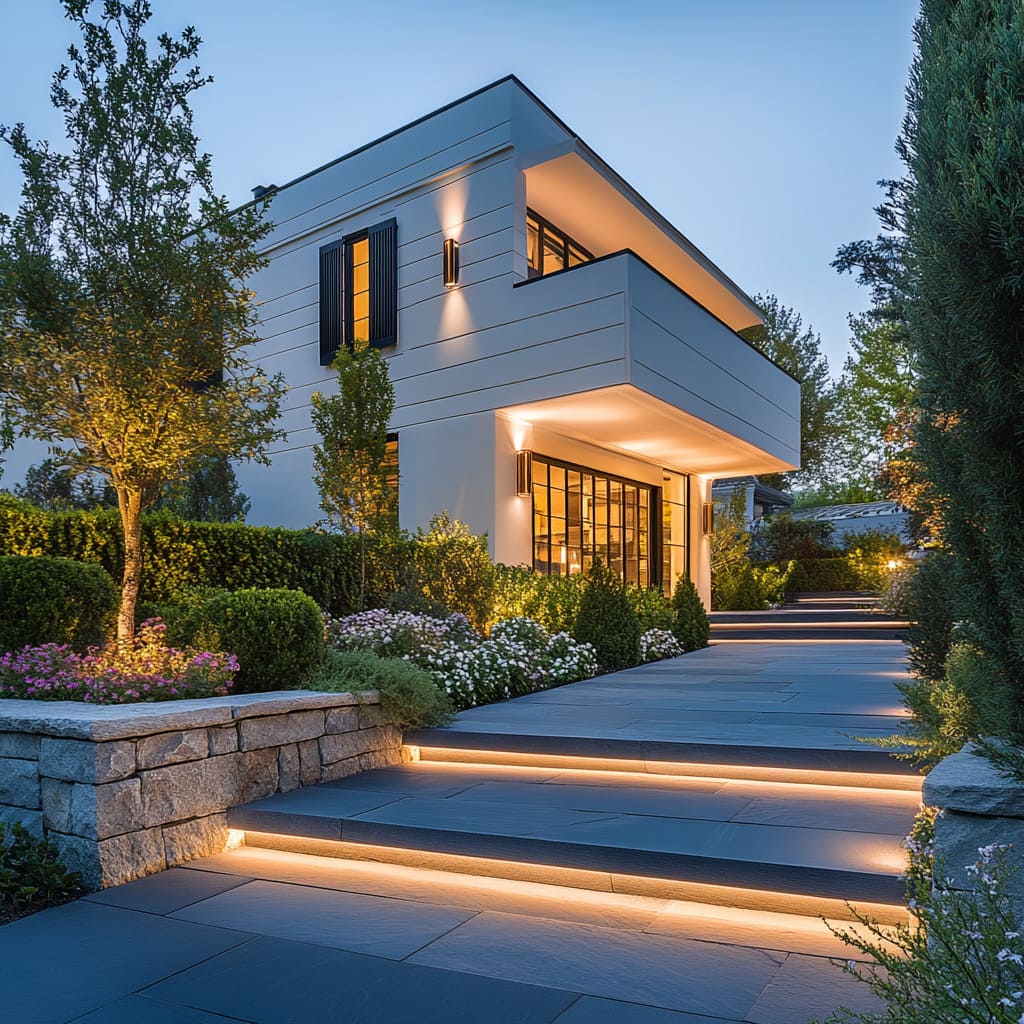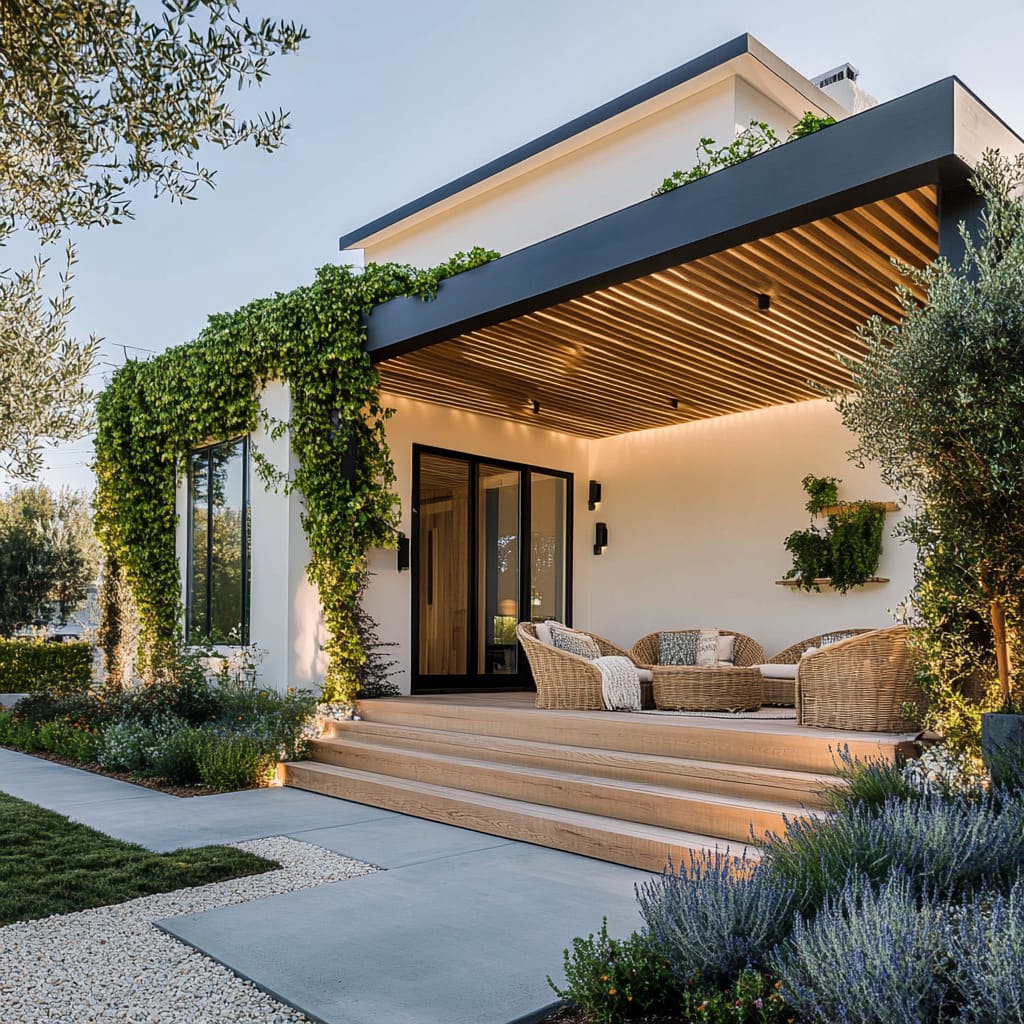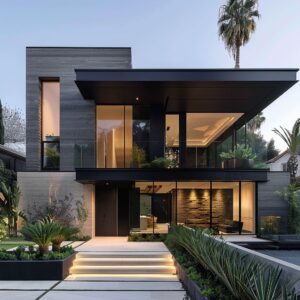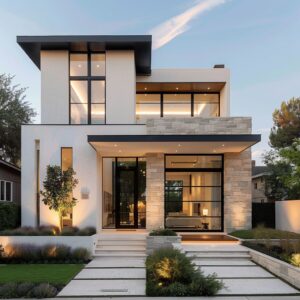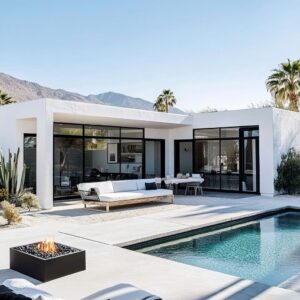Creating a modern, stylish home exterior with a black-and-white color scheme involves careful consideration of design principles, materials, landscaping, and lighting. Here, we break down the components that can help achieve a visually stunning and cohesive look for both the house and the front yard.
Key Elements That Make the Designs Impressive
Color Palette and Contrast
The black-and-white house design thrives on the sharp interplay between these two colors. White, as a dominant tone, establishes a clean, timeless backdrop that reflects natural light, making the house appear open and inviting.
Black, used as an accent for window frames, door trims, and even vertical paneling, provides a bold contrast that commands attention. To enhance this contrast, textures come into play.
Smooth, white stucco walls juxtaposed with matte black metal cladding or wooden slats create layers of visual interest. The variation between these finishes prevents the exterior from feeling flat, adding subtle complexity to the overall design.
Strategic use of glossy or polished surfaces for black elements introduces depth, reflecting light differently than matte areas, while maintaining cohesion.
Architectural Geometry
Geometric precision is a hallmark of modern black-and-white home themes. Sharp angles, straight lines, and rectilinear forms define the primary structure, emphasizing simplicity and clarity.
However, these angular forms are often softened with occasional rounded features, such as arched entryways or curved terraces, which balance the rigidity of the overall design. For homes in suburban or urban areas, where space may be limited, these geometric forms enhance functionality.
Tall, rectangular windows stretching from floor to ceiling elongate the façade visually and allow ample natural light to flood into the interiors. The inclusion of cantilevered balconies or overhangs adds drama and a sense of innovation while serving as functional spaces.
Material Selection
The choice of materials is crucial in creating a seamless, modern aesthetic. Stucco and horizontal paneling provide clean, uninterrupted surfaces, while glass plays a pivotal role in forming the connection between indoor and outdoor spaces.
Large panes of glass for doors and windows erase visual barriers, inviting the natural surroundings to complement the design. Textured materials such as natural stone or reclaimed brick are often integrated into black-and-white house exterior ideas.
For instance, a textured stone wall in a neutral tone adds a grounding effect, anchoring the otherwise sleek design. When paired with smooth stucco or glossy black panels, these materials create a tactile interplay that enriches the overall visual appeal.
Lighting Design
Lighting transforms the house from day to night, accentuating architectural features and enhancing curb appeal. Integrated LED strip lighting along staircases or beneath rooflines creates an understated glow that highlights key lines and edges.
This approach makes the home stand out without overwhelming the design. In addition to strip lighting, wall-mounted fixtures in muted metallic finishes frame doors or windows, adding a warm, inviting touch.
Recessed lights along pathways and driveways provide functional illumination while emphasizing landscaping and hardscaping details. These lighting strategies ensure that every element of the house is visible, even after sunset, maintaining the home’s polished appearance.
Symmetry and Balance
Balance is an essential component of modern house exteriors. Even asymmetrical designs are carefully calibrated to distribute weight visually.
For example, a vertical black panel on one side might be offset by horizontal windows or a prominent balcony on the other, creating a sense of harmony. In symmetrical layouts, evenly spaced windows, centered doors, or matching landscaping elements contribute to a cohesive look.
The key is to ensure that no single element feels out of place or disproportionate, allowing the eye to flow naturally across the design.
Front Yard Integration
The front yard serves as the frame for the house, and its design should complement the architectural style. Landscaping plays a pivotal role in this integration, with manicured hedges providing structure and low-profile flowering plants adding seasonal vibrancy.
Pathways made of stone or gravel draw visitors toward the entrance, blending natural materials with the house’s modern aesthetic. Trees with delicate canopies, such as birches or ornamental flowering species, soften the sharp lines of the house while providing shade and height variation.
Similarly, minimalist water features or garden sculptures act as focal points, further enhancing the front yard’s sophistication.
Functional Outdoor Features
Outdoor living spaces extend the home’s functionality and provide a direct connection to the surrounding environment. Covered patios with sleek, slatted roofs or pergolas offer shaded areas for relaxation.
Furniture in neutral tones, such as wicker chairs or low-profile wooden tables, complements the black-and-white home theme, ensuring that outdoor elements align with the overall aesthetic. Functional features such as built-in seating areas, fire pits, or small ponds not only add comfort but bring warmth and movement to the design.
These elements help balance the modernity of the architecture with a sense of livability and approachability. By combining a refined color palette, geometric precision, high-quality materials, thoughtful lighting, and harmonious landscaping, it’s possible to achieve a stunning black-and-white house exterior.
The interplay between these elements ensures that the design feels contemporary yet timeless, striking the perfect balance between form and function.
Guidelines for Designing a Modern Stylish Home Exterior
Achieving the timeless appeal of a black-and-white house theme involves a combination of meticulous design choices and creative approaches to color, geometry, materials, lighting, and landscaping. Below, we explore in detail how to replicate these striking modern exteriors.
Establish a Monochromatic Color Scheme
The foundation of a black-and-white exterior house lies in its monochromatic palette. White or light-neutral tones dominate the façade, serving as a bright and clean canvas that maximizes natural light and highlights architectural forms.
This approach not only enhances the visual appeal but also ensures the structure feels open and inviting. Strategic placement of black accents is essential.
Window frames, doorways, railings, and roof edges are ideal areas to introduce black as a contrasting element. These accents emphasize clean lines, add depth, and break the monotony of a single-tone façade.
For variety, experiment with matte or semi-gloss black finishes, as they create subtle shifts in texture while maintaining a cohesive theme.
Prioritize Clean Geometry
Modern exteriors thrive on simplicity, relying on geometric clarity to create visual impact. Angular forms, sharp edges, and minimalist compositions convey a sense of order and precision.
These designs avoid excessive ornamentation, focusing on pure, unbroken lines that reinforce their contemporary aesthetic. Horizontal planes play a crucial role in grounding the design.
Roof overhangs, extended balconies, and horizontal window arrangements draw the eye along the façade, giving the structure a dynamic yet balanced appearance. Adding subtle vertical elements, such as tall window panes or slender black cladding strips, introduces contrast and prevents the design from feeling overly flat.
Incorporate High-Quality Materials
Material selection significantly influences the success of modern black-and-white home design ideas. A harmonious blend of textures is key to achieving a polished look.
Smooth stucco, polished concrete, and large glass panes are the go-to materials for primary façade elements, delivering a sleek and seamless finish. To soften the modern aesthetic, introduce natural materials like wood and stone.
Warm wood tones, whether in slatted pergolas, entry doors, or accent panels, balance the starkness of the black-and-white palette. Similarly, stone elements—be it for partial walls, stairways, or pathways—add texture and a sense of permanence, grounding the otherwise sleek exterior.
Invest in Architectural Lighting
Thoughtful lighting design elevates the exterior, transforming the home after dark while maintaining its modern appeal. LED strip lights installed under stair edges, along rooflines, or within landscaping elements create a refined glow that emphasizes the clean geometry of the structure.
These lines of light subtly guide the viewer’s eye, enhancing the home’s visual depth. Soft uplighting for plants and architectural details introduces a dynamic play of light and shadow, adding depth to the design.
Recessed lighting around entryways and walkways ensures functionality while creating a warm, welcoming ambiance. The goal is to achieve an illuminated exterior that feels sophisticated, not overbearing.
Create a Harmonized Landscape Design
Landscaping is integral to the overall aesthetic, complementing the home’s lines and enhancing its curb appeal. Begin with structured greenery, such as tall trees or manicured hedges, to frame the property and establish visual boundaries.
These elements anchor the home within its surroundings, creating a sense of harmony. Ornamental plants, like flowering shrubs or lavender, add seasonal interest and soften the sharpness of the architecture.
Low-maintenance grasses and ground covers fill gaps, maintaining a tidy and effortless look. Pathways made of gravel, stone tiles, or wood decking connect landscaping elements while echoing the clean lines of the architecture.
Expand Outdoor Living Spaces
Modern homes blur the line between indoor and outdoor spaces, evident in the inclusion of functional, stylish outdoor areas. Covered patios or pergolas with slatted designs provide shade without compromising the home’s aesthetic.
These structures often use black frames or natural wood, blending seamlessly with the overall design theme. Outdoor furniture choices further enhance the space’s functionality.
Wicker chairs, weather-resistant sofas, and wooden coffee tables introduce natural textures that balance the hard lines of the home’s geometry. Features like fire pits, small fountains, or reflective water features enhance usability while adding a calming dimension to the design.
Designing a modern, stylish home exterior involves a careful balance of form, function, and aesthetic principles. By combining a monochromatic color palette, clean geometry, premium materials, thoughtful lighting, and harmonized landscaping, you can achieve a sophisticated and timeless look inspired by black-and-white house theme designs.
With these strategies, any home can exude modern elegance and charm, blending effortlessly into its surroundings while standing out as an architectural masterpiece.
Advanced Ideas & Observations
Creating visually captivating black-and-white exterior homes involves advanced design principles that blend artistic vision with structural precision. Below, we delve into the nuanced elements that contribute to the striking appeal of these contemporary designs.
Dynamic Use of Glass
The thoughtful incorporation of floor-to-ceiling windows serves a dual purpose. Firstly, it maximizes natural light, ensuring interiors feel open and airy.
Secondly, it creates a seamless connection between the indoor and outdoor spaces. This transparency makes the structure feel less confined and invites surrounding greenery to become part of the interior ambiance.
Large glass expanses contribute to the modern aesthetic by emphasizing simplicity and function. In black-and-white contemporary house designs, glass acts as a neutral medium, balancing the bold contrast of the color scheme.
Using reflective coatings or tinted panes enhances privacy while maintaining the sleek exterior aesthetic.
Strategic Symmetry with Asymmetrical Details
These homes masterfully balance symmetry and asymmetry to maintain visual interest. For instance, symmetrical elements like matching rows of hedges or evenly spaced lighting fixtures create order and guide the viewer’s eye.
However, asymmetrical details, such as an off-center entryway or an unconventional window layout, add a dynamic twist that prevents the design from feeling too predictable. This interplay keeps the architecture engaging.
By carefully combining order and deviation, the design appeals to both logical and creative sensibilities, making the home look meticulously planned yet creatively expressive.
Perceptual Play with Depth
One f the defining features of black-and-white exterior homes is their ability to play with depth. Black vertical cladding or trim acts as a grounding element, giving the structure an anchored presence.
These elements are frequently contrasted with lighter recessed sections, creating a sense of layers. Recessed lighting within these black-lined zones accentuates shadows and highlights, further enhancing the perception of depth.
The result is a façade that feels three-dimensional and visually rich, drawing the eye into its intricate details.
Greenery as a Softening Agent
While the sharp lines and monochromatic palette of black-and-white homes exude modern sophistication, lush landscaping provides the necessary warmth to soften the overall look. Trees, shrubs, and flowering plants are strategically placed to frame the architecture and break up its angular rigidity.
Low-maintenance greenery like ornamental grasses or native shrubs integrates effortlessly with the modern aesthetic, while seasonal flowers add color and vibrancy. The greenery also enhances the property’s connection to its natural surroundings, ensuring the home feels harmonious rather than starkly isolated.
Minimalist Details as Focal Points
Instead of overwhelming with excessive elements, modern designs rely on a few powerful features to command attention. A bold black entry door, for instance, stands out against a white stucco wall, becoming a striking focal point.
Similarly, a single flowering tree, carefully positioned, draws the eye toward the entrance or a central window. These focal points are deliberate and ensure that each element contributes meaningfully to the design.
This minimalist approach emphasizes the quality and intention behind every detail, making the design feel purposeful and thoughtfully curated. By combining dynamic materials like glass, strategic use of symmetry, and intentional layering of natural and architectural elements, black-and-white contemporary house designs achieve a captivating balance between modernity and warmth.
These advanced ideas, paired with subtle detailing and smart landscaping, make these homes timeless yet distinctive in their appeal.
Conclusion and Practical Tips
Achieving the striking aesthetic of a black-and-white exterior home involves a thoughtful combination of design elements, material choices, and landscaping that all work in unison. The following practical tips will guide you through creating a home that embodies modern sophistication while seamlessly integrating with its surroundings.
Simplicity as the Core Principle
The cornerstone of modern, stylish home design is simplicity. Avoid unnecessary embellishments or overly intricate features.
Focus on clean lines, smooth surfaces, and restrained detailing. The simplicity of form allows other elements, such as materials and lighting, to take center stage.
By using straightforward geometry and monochromatic tones, you can create a design that feels both timeless and contemporary.
Balance Between Architecture and Nature
Striking a balance between the structure and its environment is crucial for creating a cohesive look. Incorporate landscaping that frames the home while softening its sharp angles.
Trees, hedges, and flowering plants can be used strategically to enhance visual appeal without detracting from the architecture. For example, low-profile shrubs complement the horizontal planes of modern designs, while taller greenery adds vertical contrast to flat surfaces.
To further enhance harmony, use materials in the landscaping that echo those of the house. Stone pathways, gravel borders, or wooden decks create a seamless transition between the home and its surroundings.
Material Selection as a Statement
High-quality materials are non-negotiable when designing a modern home. Stucco walls, smooth concrete finishes, and large glass panels define the sleek exterior.
Complement these with textured wood or stone accents for added depth and interest. When used sparingly, black details like window frames or railings create striking contrasts against white walls, drawing attention to the home’s clean geometry.
Material contrasts—like matte finishes paired with reflective glass or textured stone alongside smooth surfaces—add visual richness without overwhelming the design. Choosing durable, low-maintenance materials ensures the home’s aesthetic remains pristine for years to come.
The Impact of Lighting Design
Lighting plays a transformative role in any modern exterior. Beyond its functional purpose, it enhances the home’s visual appeal by highlighting key architectural features and creating mood.
Install LED strip lights along stairs or rooflines to define the structure’s geometry after sunset. Recessed lighting around entryways provides a soft, welcoming glow, while uplighting in landscaping casts dramatic shadows that emphasize plants and textures.
A carefully planned lighting scheme ensures the house maintains its stylish presence at night, accentuating its design features without feeling overdone.
Expanding the Design Outdoors
Modern homes are as much about outdoor functionality as they are about indoor comfort. Covered patios, pergolas, and open balconies extend the living spaces outward.
These features encourage a connection with nature while providing practical benefits like shade or weather protection. When designing outdoor areas, prioritize a cohesive look by using materials and colors that match or complement the main structure.
For instance, a pergola with black slats echoes the window frames, while wooden decking matches accents used on the façade. Furniture selection should also align with the home’s aesthetic—wicker, wood, or neutral-colored furnishings blend beautifully with modern designs.
Cohesive Landscaping Integration
Landscaping is more than just a decorative element—it’s an essential part of the design. Layer your landscaping with trees, shrubs, and ground cover to create depth and visual interest.
Incorporate materials like gravel or stone in pathways to add texture and contrast. Ornamental grasses and flowering plants provide seasonal vibrancy, creating a dynamic interplay between the architecture and nature.
Strategically placed water features or minimalist sculptures can serve as focal points in the front yard, tying the landscaping to the modern aesthetic of the home.
Final Thoughts on Cohesion
To truly achieve the aesthetic of a black-and-white exterior home, every detail must feel intentional. From the placement of plants to the finish of the materials, the goal is to create a seamless experience where each element enhances the other.
A well-designed home doesn’t just impress at first glance but continues to reveal its thoughtfulness and harmony with every detail. By following these principles and investing in the interplay of simplicity, balance, and quality, you can create a home that stands out while maintaining timeless appeal.
